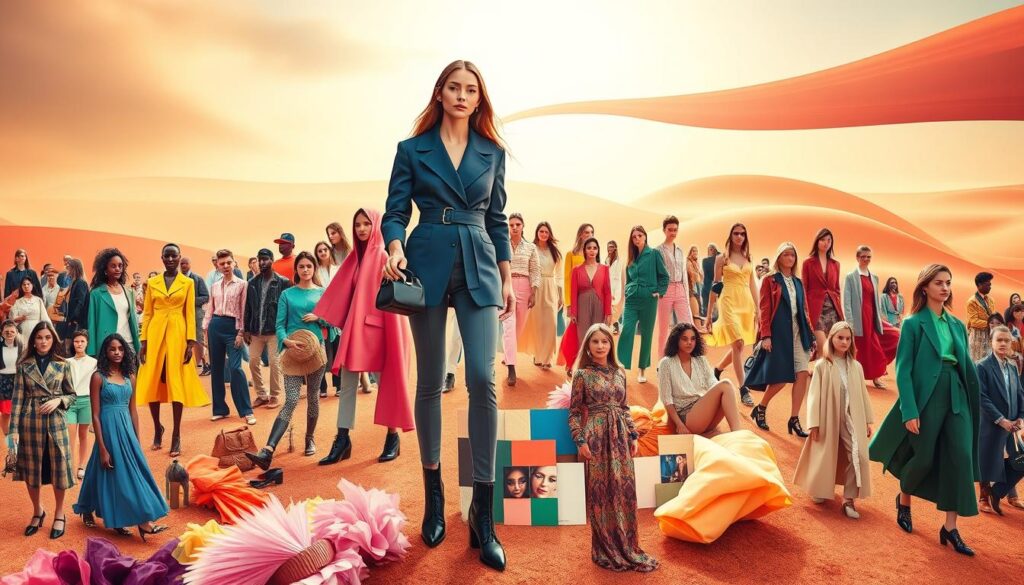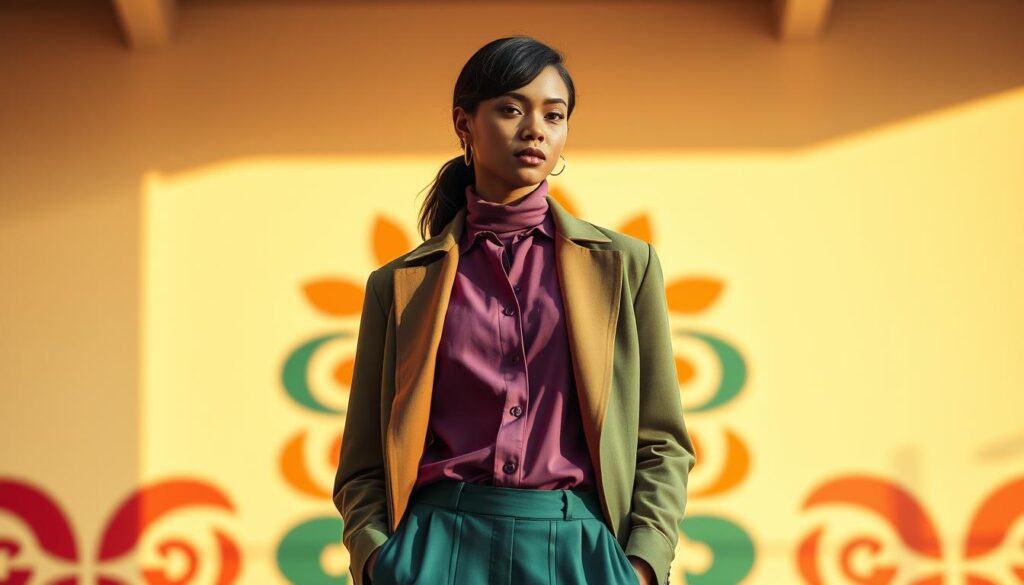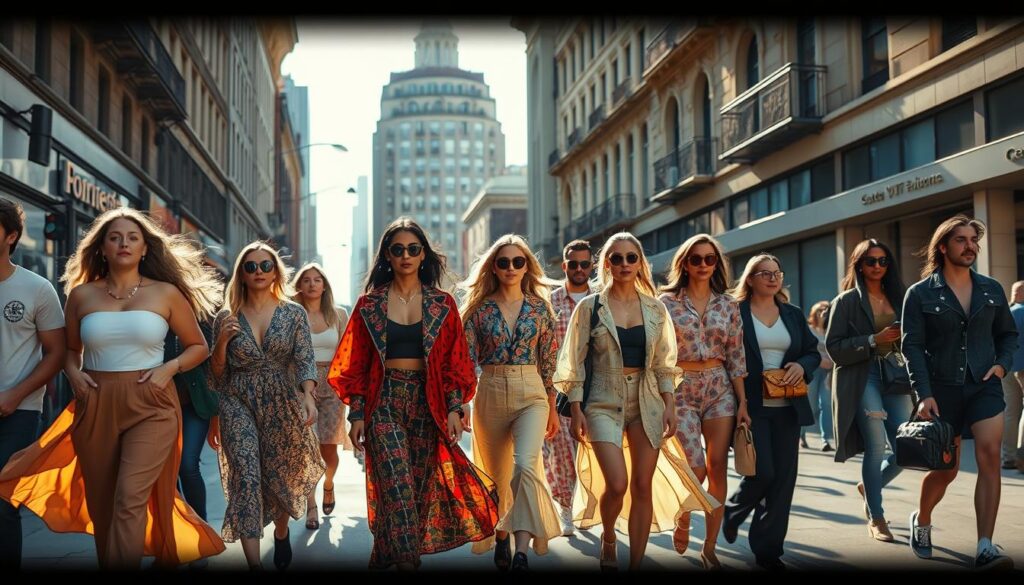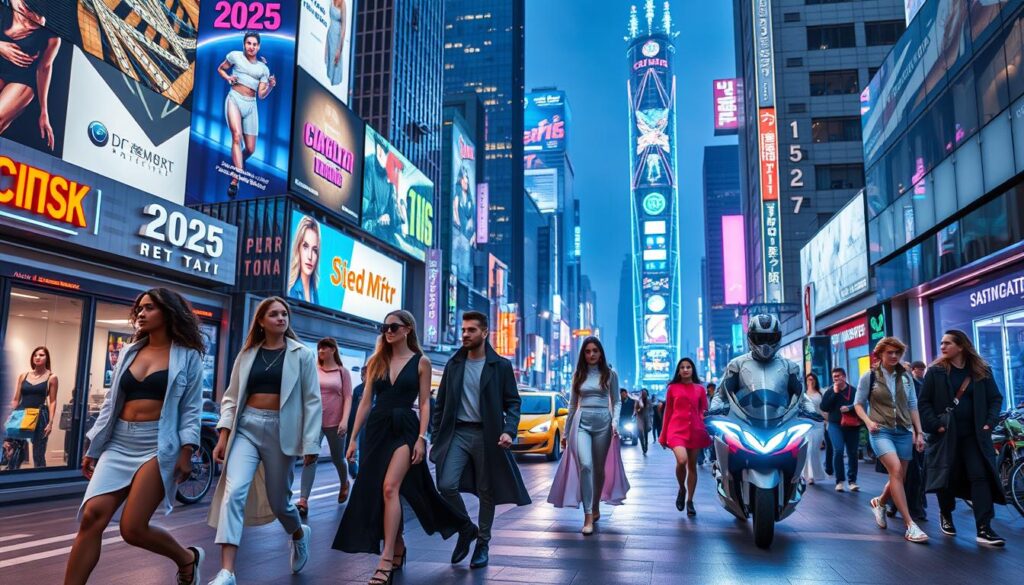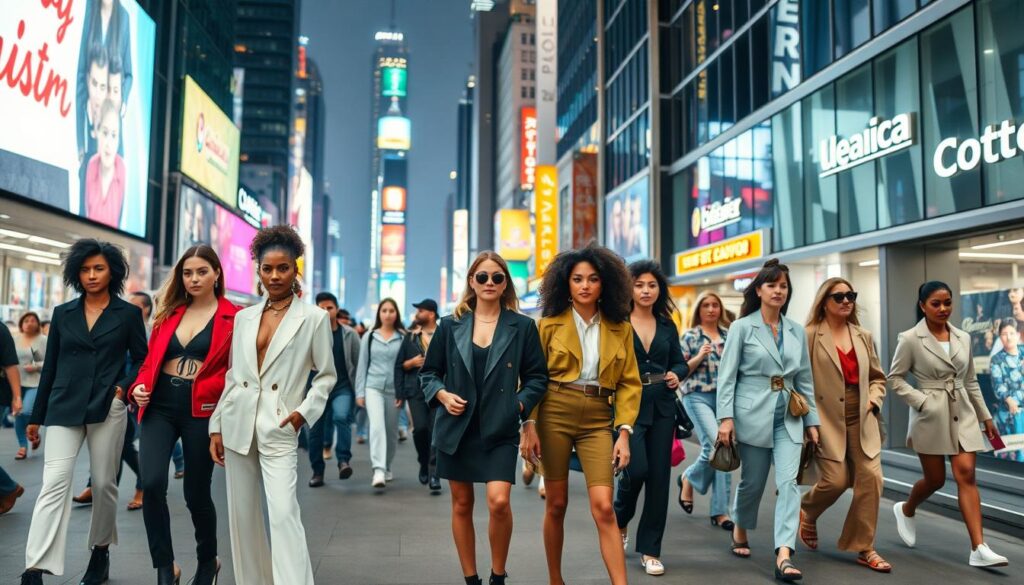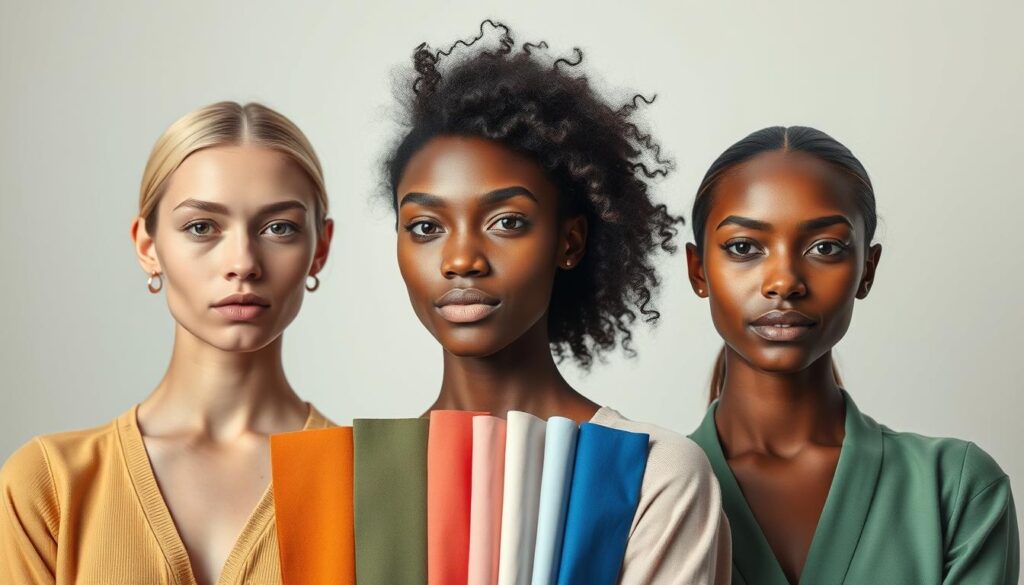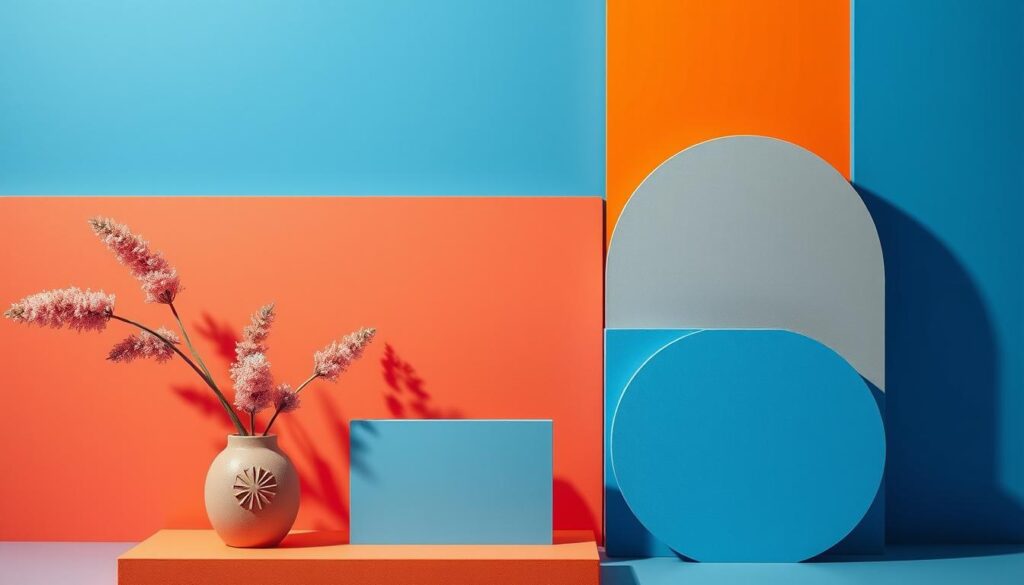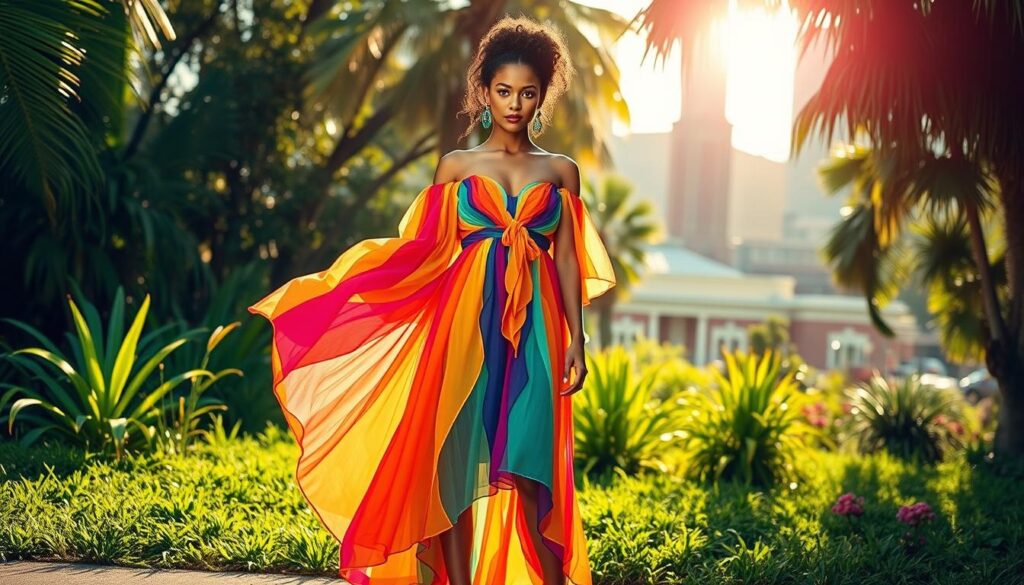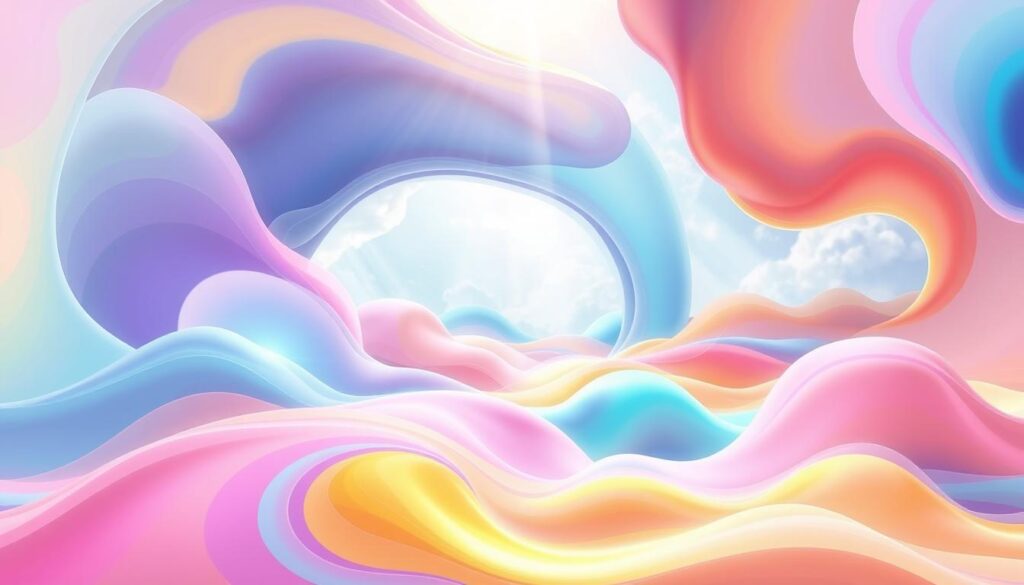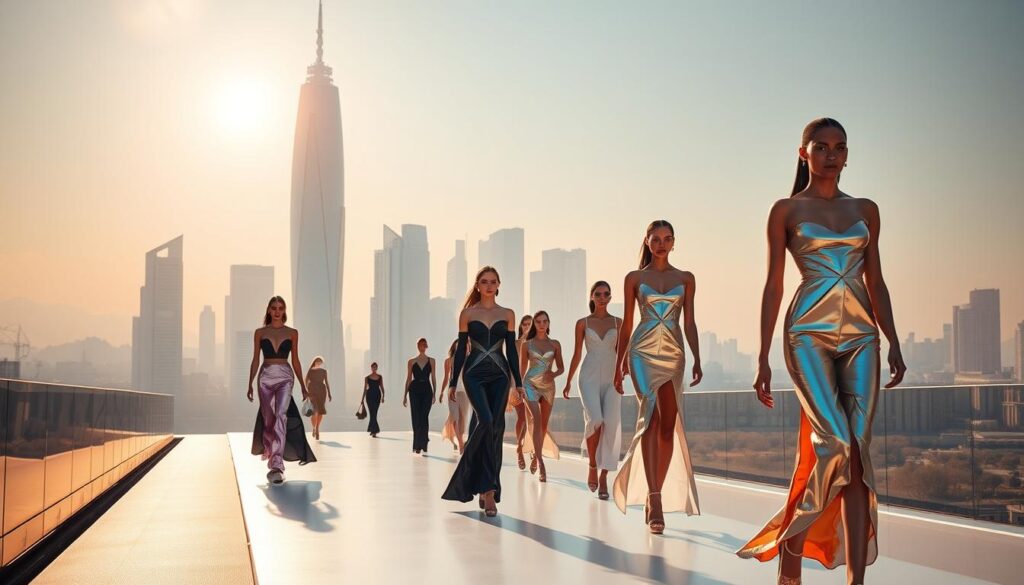the world of fashion and colors
“Welcome to your first destination for fashion and color!” Discover everything you need to highlight your style and keep up with the latest trends. We offer you invaluable tips for coordinating your outfits and choosing the colors that suit your personality. Let us help you turn every moment into a display of elegance and beauty. Because you deserve to look your best, every day!
A Captivating Journey Through Fashion’s Past Eras
Exploring fashion reveals a rich history of change over the decades. Each era has left its unique mark on fashion. The story of fashion trends is fascinating, showing how society, culture, and technology have shaped our clothes.
Looking back from the Roaring Twenties to today, fashion’s history is truly captivating. It shows us the importance of knowing the past to appreciate today’s fashion. As we move through the decades, we see how many factors have influenced fashion, from social changes to new technologies.
By studying fashion trends, we learn what has driven change over the years. From the rise of sportswear in the 1920s to today’s focus on sustainable fashion, we gain insight. This journey not only deepens our understanding of fashion but also inspires us to make choices that fit our style, contributing to the ongoing evolution of fashion.
Key Takeaways
- The history of fashion evolution through the decades is a rich and fascinating story that showcases how societal changes have influenced the way people dress.
- Understanding the fashion trends history is essential to appreciating the current state of fashion and its ongoing evolution.
- The fashion evolution timeline highlights the significance of past trends in shaping present and future fashion designs.
- The rise of sustainable fashion is a key element in the current fashion evolution timeline, with many brands focusing on ethical production processes and eco-friendly materials.
- By exploring the fashion trends history, you’ll be able to identify the key elements that have contributed to the fashion evolution through the decades.
- The fashion industry continues to evolve, with digital influencers and technological innovations playing a significant role in shaping fashion trends and the fashion evolution timeline.
Exploring the Roaring Twenties: F and Flapper Culture
The 1920s saw big changes in fashion, with flapper culture leading the way. This era is famous for its iconic fashion moments. The little black dress, introduced by Chanel in 1926, became a timeless classic.
The 1920s were a time of big change, mainly for women. The flapper culture, with its short hair and bold fashion, inspired many young women. They started living more freely. Some key fashion trends of the decade include:
- The bob hairstyle, which became a dominant trend by 1926
- The cloche hat, which was a significant shift from the oversized pancake hats of the previous decades
- The Robe de Style silhouette, associated with designer Jeanne Lanvin
The 1920s were also marked by cultural and social changes. The Harlem Renaissance and the rise of jazz music and dance were big. Fashion and sportswear also merged, with tennis star Suzanne Lenglen teaming up with couturier Lucien Lelong in 1926.
In summary, the 1920s were a decade of iconic fashion moments and style evolution. As we look at fashion history decade by decade, we see it was a time of great change and freedom, mainly for women.
The Glamour of the 1930s: Hollywood Meets Fashion
The 1930s was a decade filled with historical fashion moments. Hollywood’s rise greatly influenced the fashion industry evolution. This era brought us bias-cut gowns, thanks to French couturier Madeleine Vionnet.
Designers like Chanel, Schiaparelli, and Lanvin took up this style. They made the 1930s fashion unforgettable.
Some key fashion history highlights of the 1930s include:
- The introduction of rayon, a cellulose-based fiber, which became widespread in fashion production.
- The emergence of nylon as a popular alternative for silk stockings.
- The incorporation of zippers into high fashion for the first time in 1935.
Hollywood’s impact on fashion was huge. MGM costume designer Gilbert Adrian created iconic looks for stars. The decade also saw a cultural shift, with the end of Prohibition in 1933.
The rise of film as a cheap form of entertainment during the Great Depression was significant. The historical fashion moments of the 1930s still inspire today. The fashion industry evolution is still influenced by the glamour and sophistication of this era.
The 1940s: War and its Effect on Fashion Choices
The 1940s was a key time for fashion, shaped by the war. Fabric was scarce, so clothes had to be simple and useful. Designers made clothes that needed less material. This led to the “New Look” by Christian Dior, which used more fabric than allowed before.
Some notable fashion trends of the 1940s include:
- Utility clothing and fabric rationing
- The rise of the “New Look”
- Iconic fashion figures such as Christian Dior and Claire McCardell
The 1940s changed fashion a lot. Gone were the fancy dresses of the 1930s. Now, clothes were made for practical use, like overalls and bomber jackets. The “New Look” by Dior in 1947 was a big change in fashion.
The war and other events like the bikini’s debut in 1946 shaped 1940s fashion. The era focused on simple, useful clothes. Looking back, we see how the 1940s influenced fashion for years to come.
The 1950s: Post-War Prosperity and the Rise of Youth Culture
The 1950s saw a big change in fashion trends history. The world moved from wartime simplicity to glamorous styles. This decade is seen as a key part of the 20th century’s fashion evolution timeline. Youth culture was a big influence on iconic fashion moments of the time.
Several factors shaped youth fashion in the 1950s:
- Rock and roll music, which influenced music, fashion, and behavior.
- The greaser style, with slicked-back hair, leather jackets, and blue jeans.
- Ivy League fashion, made famous by brands like Brooks Brothers and J.Press.
The 1950s economic boom gave young people more freedom to spend. This led to new fashion trends like the poodle skirt and the mini skirt. Youth-targeted media, such as teen magazines and music TV, helped define young people as a unique social group.
The 1950s set the stage for later subcultures and still influences today’s fashion trends history. Designers like Christian Dior and Yves Saint Laurent were key. Their designs, with a nipped waist and full skirts, were a big change from the 1940s. They became an iconic fashion moment of the decade.
The 1960s: A Decade of Revolution and Social Change
The 1960s were a time of big changes in fashion history highlights. This decade saw a big shift in fashion industry evolution. With over 90 million young people in the U.S., fashion became all about youth.
The term “Youthquake” was used in 1965 to describe this change. It showed how fashion was influenced by young people.
Some key trends of the 1960s include:
- Mini skirts and micro-mini lengths
- Synthetic fibers such as polyester, acrylic, and Spandex
- Ready-to-wear clothing and boutiques catering to youth culture
- Casual and informal menswear, including the Nehru jacket and Ivy League style
Men’s fashion changed a lot in the 1960s. Gone were the days of just suits. Now, men wore vibrant colors and bold patterns.
The Mod style came from London’s Carnaby Street. It featured slim suits with narrow lapels and flat-front trousers. These were often in bright colors and psychedelic prints.
The historical fashion moments of the 1960s set the stage for future trends. New styles, designers, and icons emerged. They showed the era’s spirit of rebellion and nonconformity.
The decade’s fashion industry evolution saw big steps forward. Textile technology, mass production, and marketing improved. This made fashion more accessible to everyone.
The 1970s: A Decade of Disco and Punk
The 1970s was a key time in fashion history. It saw the rise of disco and punk styles. This era was all about expressing yourself and being different. Events like the first Women’s Strike for Equality in New York City also influenced fashion.
Fashion in the 1970s focused on soft, clingy materials. It moved away from stiff undergarments. The term “sportswear” became popular, focusing on comfy and useful clothes as more women worked outside the home. Key trends included:
- Polyester’s peak popularity
- The rise of designer denim, with brands like Calvin Klein and Gloria Vanderbilt
- The emergence of punk fashion, influenced by Vivienne Westwood and Malcolm McLaren
New fabrics, colors, and styles emerged, showing the era’s love for trying new things. The wrap dress, by Diane von Fürstenberg, symbolized women’s freedom. The slim-legged jean, or cigarette-leg, was also big at the end of the decade.
The 1970s mixed disco and punk styles in a unique way. Fashion became more comfortable and practical. Historical moments kept shaping the fashion world.
| Year | Fashion Trend |
|---|---|
| 1970 | First Women’s Strike for Equality in New York City |
| 1973 | Introduction of the Boeing 747 and the rise of the jet set era |
| 1974 | Beverly Johnson becomes the first Black woman to grace the cover of Vogue |
| 1975 | Polyester leisure suit becomes a dominant style for men |
| 1976 | Punk fashion movement emerges in London |
| 1977 | Disco culture has a significant impact on fashion |
The 1980s: A Decade of Excess and Power Dressing
The 1980s were a time of big changes in fashion trends history. Power dressing and streetwear became big. The era was all about being flashy and showing off wealth.
Some big fashion evolution timeline moments happened in the 1980s. Power suits with big shoulders and double-breasted designs became popular. Hip-hop fashion also emerged, with Kangol caps, gold chains, and acid-wash jeans.
Karl Lagerfeld’s work at Chanel in 1983 was a highlight. It made Chanel very popular again. This was a big moment in fashion history.
Iconic fashion moments of the 1980s include “The Yuppie Handbook” in 1984. It showed off a wardrobe with Ralph Lauren suits and Coach bags. Body-conscious fashion also became popular, with designers like Azzedine Alaïa and Donna Karan.
- The New Romantics movement, which emerged in the early 1980s, characterized by flamboyant and unisex designs
- The emergence of streetwear and hip-hop fashion, with key elements including Kangol bucket caps, gold chains, acid-wash jeans, and jogging suits
- The rise of power dressing, with designers like Claude Montana and Thierry Mugler being key figures in this movement
The 1990s: A Decade of Grunge and Minimalism
The 1990s was a big change for fashion. It moved away from the flashy 1980s. Designers like Calvin Klein and Jil Sander started making clothes that were simple. Supermodels like Linda Evangelista and Naomi Campbell also helped shape the decade’s style.
This era brought new fabrics, colors, and styles. Grunge from Seattle became popular, with flannel shirts and ripped jeans. Minimalist fashion also emerged, focusing on clean lines and simple shapes.
Some key trends included crop tops and spaghetti straps with high-waisted jeans or skirts. The aerobics craze from the 1980s also influenced early 1990s fashion. Bright leggings and oversized sweatshirts became popular. Denim became a must-have in many people’s wardrobes.
The 1990s also saw a rise in minimalist fashion. Designers like Marc Jacobs and Calvin Klein made clothes that were simple. This, along with grunge, changed fashion history. New designers like Rifat Ozbek and models like Kate Moss also made their mark.
The 2000s: A Decade of Fast Fashion and Sustainability
The 2000s saw a big change in fashion. Fast fashion became popular, offering cheap, trendy clothes to many. This fast pace in fashion led to the industry being a big part of global carbon emissions, around 8-10%.
People bought more clothes in 2014 than in 2000, but kept them for less time. This led to a lot of textile waste, with about 92 million tons thrown away each year. The focus on quick fashion hurt the environment a lot.
But, there’s a shift towards sustainable fashion now. More people want to buy clothes that are good for the planet. Companies are also working on being more eco-friendly. By choosing the right brands, you can help make fashion better for the environment.
The 2010s: A Decade of Digital Influence and Social Media
The 2010s brought big changes to fashion, thanks to digital influence and social media. Fast fashion grew, with brands like H&M and Zara offering trendy clothes at low prices. But social media platforms like Instagram and Twitter really changed the game.
Now, anyone could start a trend with just a post. Influencers used their online fame to influence what people wanted to wear. Brands quickly made affordable versions of runway looks to keep up with fast-changing trends. They also focused more on including everyone, thanks to brands like Fenty Beauty.
The decade also saw fashion go digital. Designers started virtual fashion shows and created digital clothes. At the same time, caring for the planet became more important, with brands choosing eco-friendly options and people looking for second-hand clothes.
The 2010s were a turning point for fashion. Social media, digital trends, and a push for inclusivity and sustainability changed the industry. These changes will keep shaping fashion, making it more relevant to today’s consumers.


